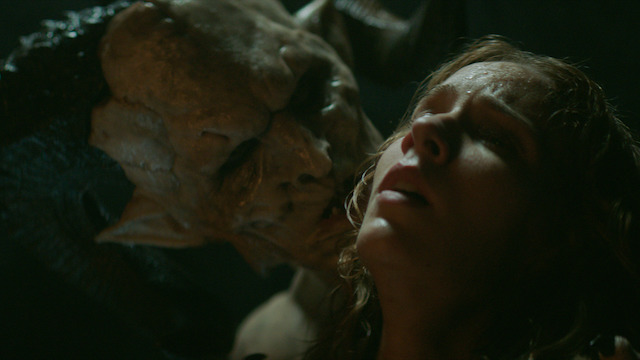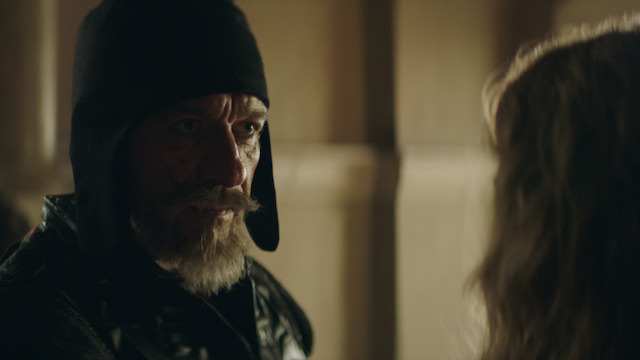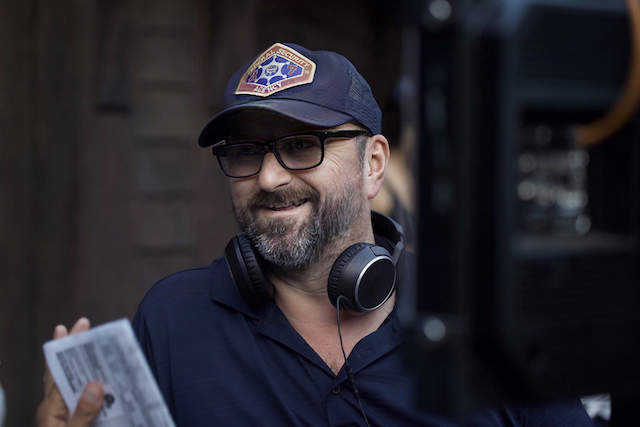The Reckoning, which is the latest horror film from the mind of director and writer Neil Marshall (Hellboy, The Descent), is set to release on Shudder tomorrow, May 13. Set during the Great Plague in 1665, the historical film follows a mother played by Charlotte Kirk that is unjustly accused of being a witch after her husband dies. The film also stars Joe Anderson, Steven Waddington, and Sean Pertwee.
Ahead of the film’s release, ComingSoon.net Managing Editor Tyler Treese talked to Marshall about The Reckoning‘s portrayal of sexism, its frightening scenes, and the mob mentality that led to the unjust deaths of thousands of women.
Check out our The Reckoning interview below:
Tyler Treese: One thing that really stood out about The Reckoning is that it really picks a great time period for a horror film. There’s the fear of the invisible plague. The plague doctor masks are so frightening. You’ve got human mobs. There are so many great elements. What really excited you from a horror perspective of doing it during that time period?
Neil Marshall: I think that’s obviously a big, big part of it. It kind of ties into all that kind of gothic horror and pitchfork waving that you kind of know from Frankenstein and such from the classics as well as things that we find in general. Of course, that period of your English horror that ties into Hammer [Films] and there’s a tradition surrounding that kind of a period and that kind of horror, which I found fascinating. That was the big goal for me.
Is it difficult filming a time period piece compared to a modern-day picture?
Certainly more difficult. I mean [you’ve got] costumes, horses… Horses are a pain in the neck. They’re very cinematic, but difficult and they’re expensive. So there are so many elements like that, and story points that you can’t rely on like people calling each other up on phones and things. Well, how, how does information get from one character to another? And in that time period, all of these things that you have to think about that we take for granted now. You think, “Well, how would they know this?” “How would they understand what’s happening?” So there’s a lot of things to think about. I love the world-building and I love period stuff myself. I’ve done quite a bit of historical things over the years. I’m a student of history anyway. So, I just like delving into that and trying to recreate these worlds as reasonably authentically as possible.
A lot of people shy away from periods stuff like execs and finances or whatever, like shy away from period stuff. I think of period stuff as being as much of a kind of fantasy genre as fantasy or sci-fi or anything else. You’re creating a world that the majority of people who were watching it are completely unfamiliar with and passing it to them as if it were a different planet. That’s the kind of way to look at it for me.

Speaking to the fantasy element, it’s crazy to forget just how grave the power imbalance between men and women was in the film and this is true to history. One word, one accusation, can get a woman called a witch and you do a great job highlighting that imbalance and it’s uncomfortable to watch. Can you just speak to getting to explore that imbalance of power between sexes?
Doing the research for this, there’s a lot of books on the subject and explanation of why people were accused of being a witch. Most of the time, the church was heavily involved with it as well. They were quite comfortable in promoting the idea that everybody should be on the lookout for witches and if they find them, they should be punished for it. 500,000 women were ultimately tried, tortured, and executed. That’s not an exact figure. It could be as high as a million. That’s a ballpark figure that’s been discussed in a number of historical texts that it was a lot.
It could be because their neighbors didn’t like them, it could be because they had red hair. It could be because they had a mole on their face. It could be, it could be any number of reasons or just the slightest excuse that a bunch of guys, would have come up with and said, “Oh, she’s a witch and she’s got the cat to prove it.” They’re living in fear constantly. To me, it was just terrifying. These women, they couldn’t put a foot wrong, or else that could potentially happen to them. Especially during the Great Plague when the population was almost encouraged to believe that it was the work of the devil. They have to be on the lookout. The walls have ears, the witches are out there. The devil is doing his work and just be on the lookout. One of the great historic oddities that we discovered was that what they did was in being on the lookout, they slaughtered cats in their thousands because cats were the means by which the witches spoke to the devil. They were their familiars. So they slaughtered thousands of cats, which ultimately led to rats spreading everywhere. Because of the rats were everywhere, the plague spread everywhere. So that was so self-defeating.
In the film, we see Grace get torture, and then we see her deteriorating mental state and she’s not allowed to sleep. She’s getting beaten, just trying to get a confession out of her. What was your thought process in depicting those scenes and showing that type of psychosis that was happening?
It needed to be a degradation really, or like it was a process by which she doesn’t start having visions about the devil until people start talking about that. So after people start talking about the devil and the process of things, so it’s kind of getting into a psyche and exploiting it that way. That was part of it, it was just like how she couldn’t [just] be challenged physically. She’s going to be challenged mentally. She’s going to be challenged spiritually. On every level, she’s going to be pulled apart and has to keep it together basically. It was a journey and the tortures themselves, we did a lot of research into the various kind of tortures that we used. The ones that we used in the film were actually one of the few that you could survive because most of them were lethal.
They were essentially a means of executing somebody as an excuse. They were witches, so we’ll say we’re trying them, but there’s no way they’re getting out of it. So it appears on the surface to be somehow fair, but just so blatantly not. I mean the classic example being, they used to tie them up, put them in a bag and throw them in the river. And if they floated, if they somehow survived, that was because they were witches. They were guilty and then they would be executed, and if they drowned, therefore they were innocent. When you’re dealing with that kind of logic, it’s kind of a no-win scenario.

I think one of the scariest parts of the film is the real human element. You know, we have these mobs in the witch hunters and some of them actually believe that they’re doing the moral, righteous thing. Can you speak to them being the ultimate villain?
That’s the thing fanaticism is still with us today in one form or another, um, as is the misogyny and everything else. I mean, we’ve changed the goalposts a little bit, but it’s still there. So with these villains or what I liked about the fact that there are two different villains and they have two very different ideologies. One of them is a complete sadist and he’s just in it for the pain and the punishment. The other one believes absolutely 100% believes that what he’s doing is right, and it’s God’s work. He’s saving her soul, he’s torturing her body, but he’s saving her soul. And I thought that was fascinating that you’ve gotta see it from the villain’s point of view. They can’t just be cardboard cutouts and be a really good lure. It’s like his motivation gonna be as good as our hero or in this case, our heroine. So that makes it really terrifying and makes it a force to be reckoned with.
MORE: Jonathan Nolan & Lisa Joy Producing Amazon Horror Anthology Series










